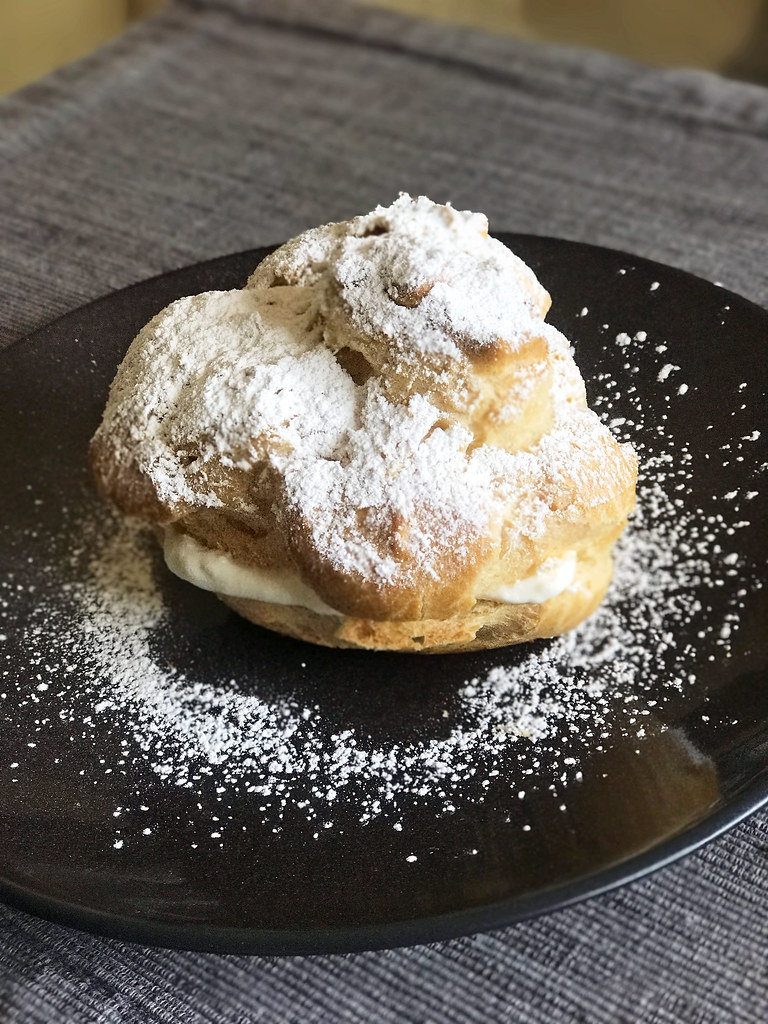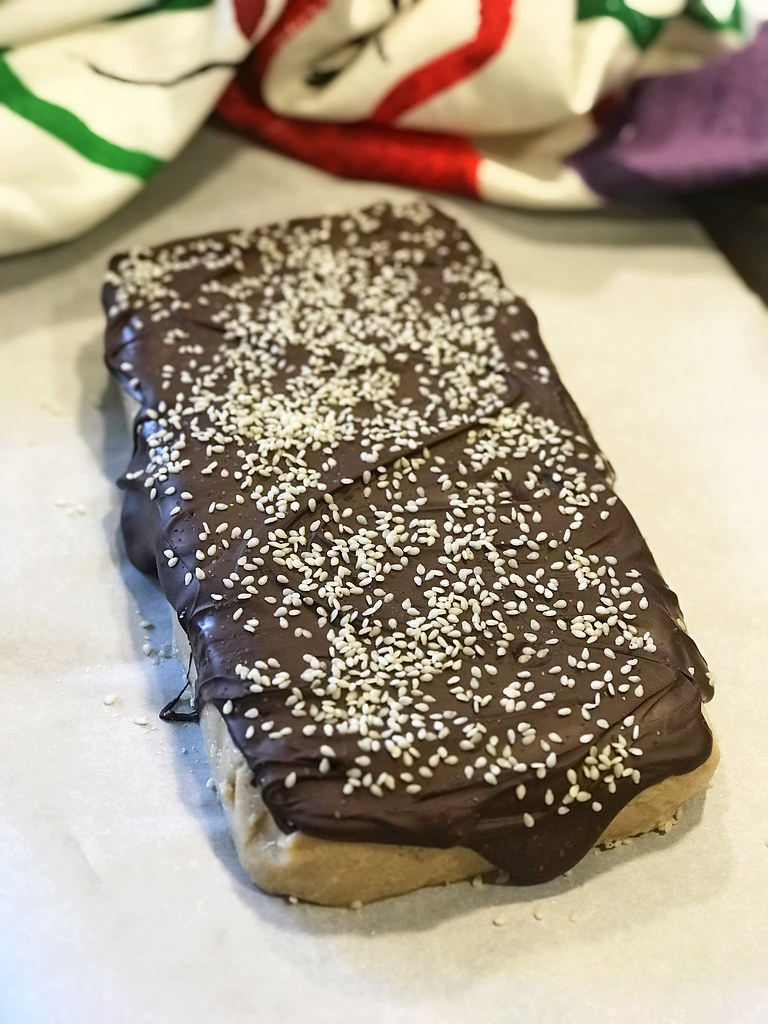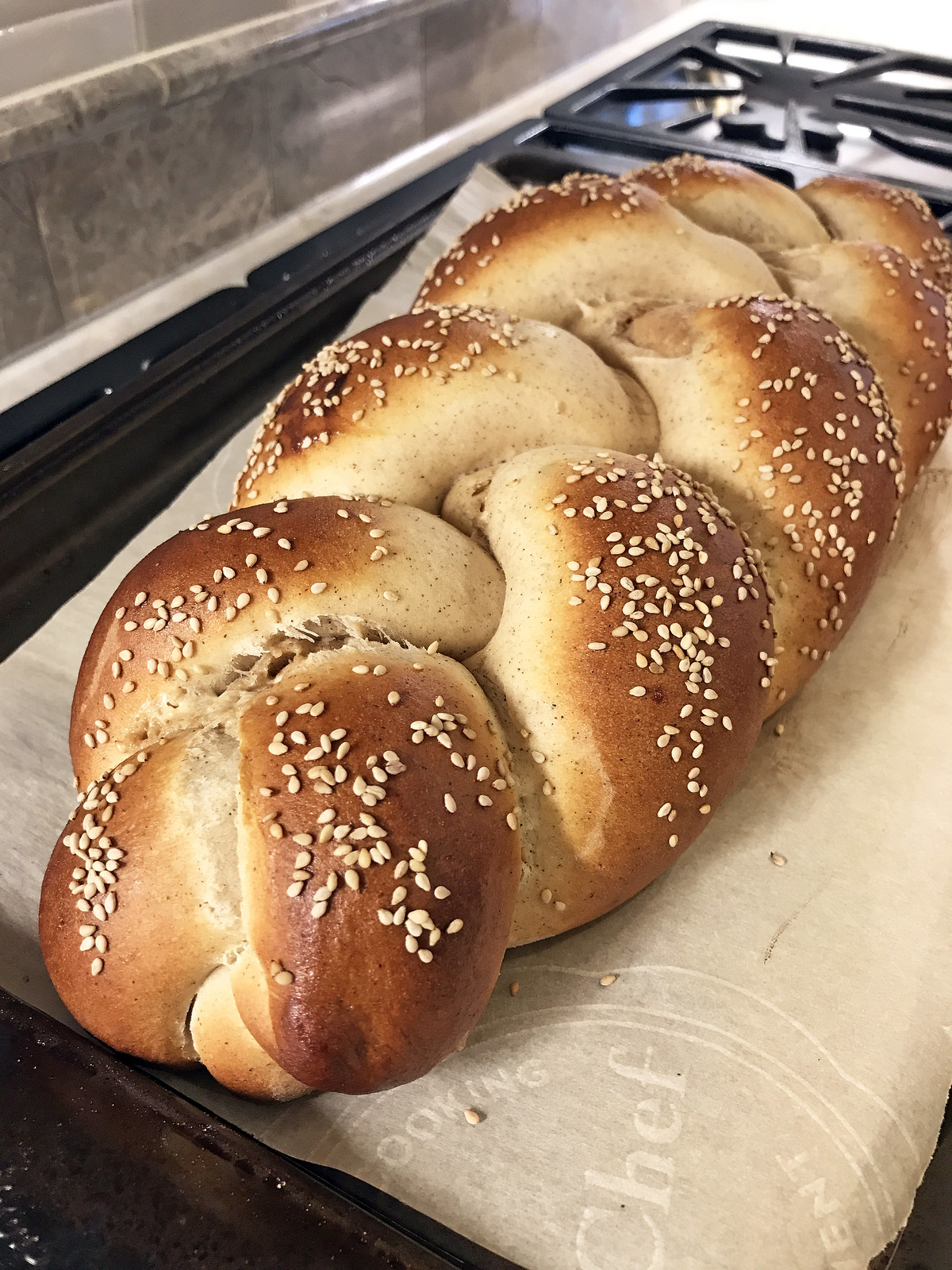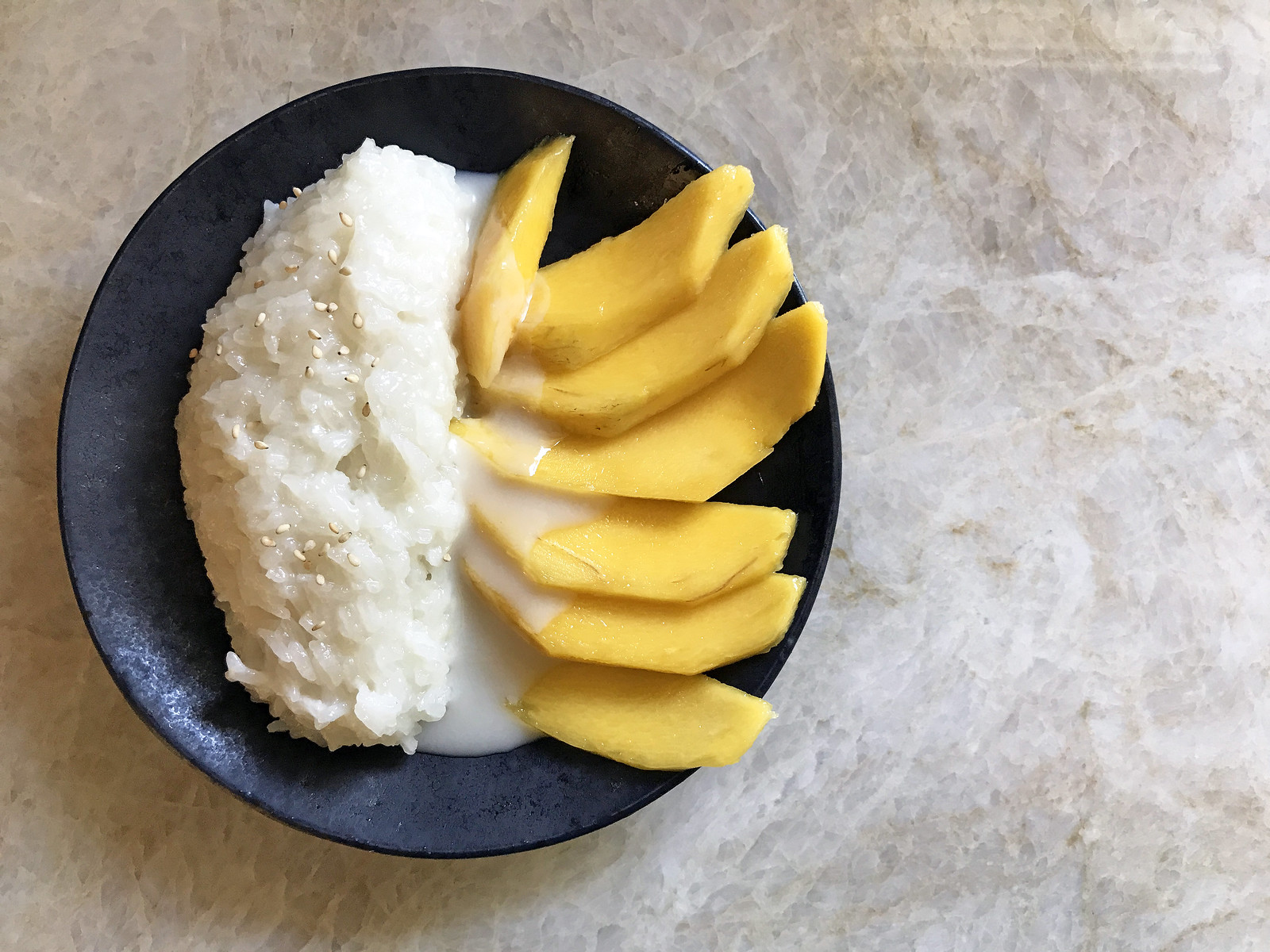Raise your hand if you grew up salivating over these at every mehmooni. These cream puffs are giant to the max and fluffy to the max, with just a hint of fragrant rosewater.
Be patient mixing the dough on this — it’ll look like it’ll never come together, but it will. And the wait will be worth it, I promise.
These cream puffs are best eaten fresh the day of.

Ingredients:
For the filling:
1 1/2 cups heavy cream
7 tablespoons powdered sugar
1 tablespoon rose water
3/4 teaspoon vanilla extract
For the dough:
1 cup cold water
1/4 teaspoon salt
6 tablespoons unsalted butter, diced into cubes
1 teaspoon vanilla extract
1 tablespoon rose water
1 cup flour, sifted
4 room temperature eggs
For the dusting:
1/3 cup powdered sugar, sifted
1. To prepare the filling: In a large bowl, combine the cream, sugar, rose water, and vanilla, and whip at high speed until soft peaks form. Cover and chill in the refrigerator.
2. To make the dough: Line 2 baking sheets with parchment paper. Preheat the oven to 425F degrees.
3. In a medium saucepan over medium heat, combine the water, salt, and butter, and bring to a boil, stirring well with a wooden spoon. Add the vanilla and rose water. Reduce heat to very low and add the flour, all at once, stirring constantly (3 to 5 minutes), until you have a stiff paste.
4. Remove the dough from the heat and continue to stir for 4 or 5 minutes to help the dough cool down.
5. Make sure the temperature of the dough is around 150F degrees at this time and add 1 egg to the dough and stir for 1 minute. The dough should become glossy and silky. Continue to stir for another minute until the egg has been absorbed and the dough is no longer glossy. Continue adding the eggs, 1 at a time, stirring each time an egg is added until the dough is no longer glossy. The dough should be light, smooth, and airy.
6. Bake the cream puffs: Use an ice cream scoop to drop 12 equal portions of the dough onto the 2 prepared baking sheets, leaving 2 inches between each dollop. Bake for 20 minutes.
7. Without opening the oven door, reduce the heat to 350F degrees and continue to bake for another 20 to 25 minutes or until the puff pastries are golden.
8. Remove from the oven and place on a wire rack to cool thoroughly.
9. Just before serving, use a serrated knife to cut through the pastries crosswise. Use a pastry bag to squeeze the chilled filling into the pastry, dividing between the 12 pastries. Dust the tops with powdered sugar and serve.




